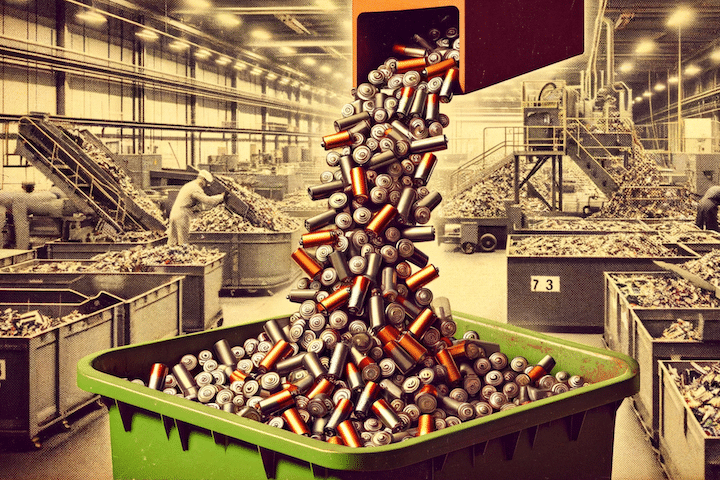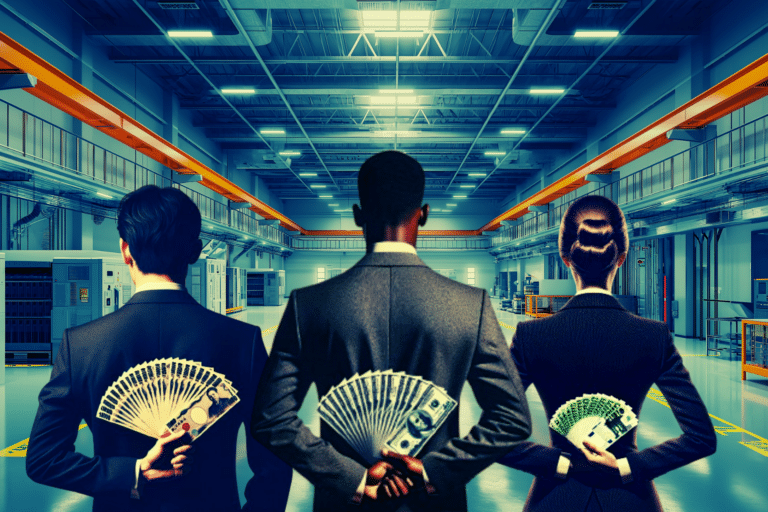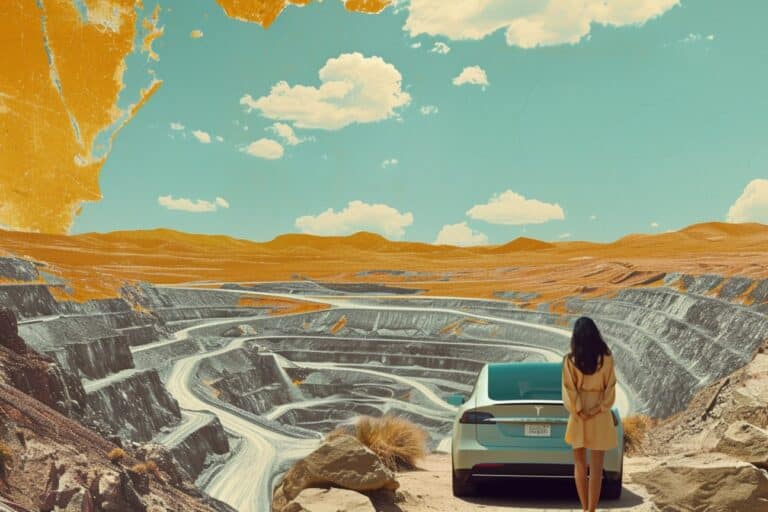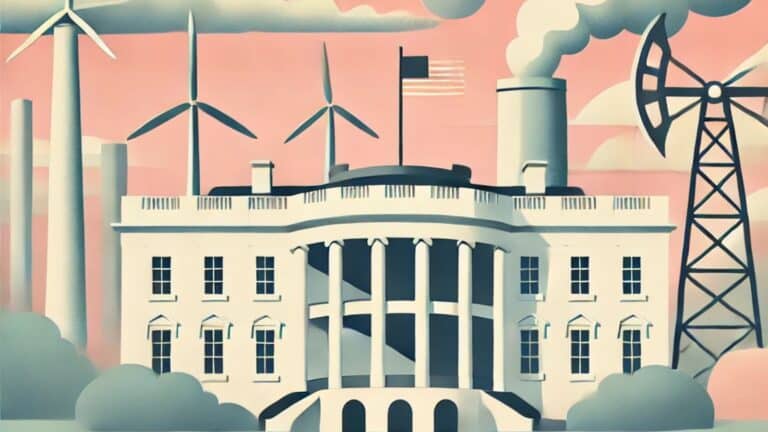Efrem Jernigan: [00:00:00] The bill came on a Tuesday. We didn’t really know what to expect. We knew if the average bill was $200, we were expecting to pay 150. [00:00:14][14.0]
Melissa Lott: [00:00:15] This is from Jernigan. Back in 2017, he had solar panels installed on his elderly parents house. A friend, it inspired him to test them out. [00:00:24][8.9]
Efrem Jernigan: [00:00:25] I found out that she had put solar on her home and so my parents and I, we went out to her home. We seen the example of how solar was working. [00:00:35][10.2]
Melissa Lott: [00:00:36] So Ephrem knew that solar panels could save his parents money on their electricity bills for every bit of power that the panels generated. His parents would get this credit back on their bill, and the credit might cut a $200 bill, let’s say, down to 150, or at least that’s what he thought. But he wasn’t even close to what actually showed up on their next bill. [00:00:56][19.7]
Efrem Jernigan: [00:00:56] -$384. [00:00:56][0.0]
Melissa Lott: [00:01:03] -$384. That’s how much their first electric bill was. Post the solar panels. The credit had essentially wiped out his parent’s entire bill and then gave them back an additional $384 to count towards future bills. It was like they got this electricity gift card in the mail for hundreds of dollars. And so I asked him what his parents thought about all this. [00:01:25][22.4]
Efrem Jernigan: [00:01:26] They said, My child is special. [00:01:28][2.1]
Melissa Lott: [00:01:31] Ephram actually knew quite a bit about solar already. He taught science, math, engineering and technology in the historically black Sunnyside neighborhood where he grew up, which was also where his parents lived. And he often used solar panels in class demonstrations. But even with a background in solar, the -$384 bill blew him away. [00:01:51][19.8]
Efrem Jernigan: [00:01:51] I changed the whole curriculum to teach what I just saw. [00:01:55][4.0]
Melissa Lott: [00:01:56] So we started talking about the bill in his classroom, using it as a way to teach math and also to share his story with his students and their parents, hoping to get more people on board with solar. [00:02:06][10.0]
Efrem Jernigan: [00:02:07] And that was about the easiest less than I’ve taught in 13 years of STEM education. For his math goes. [00:02:13][5.6]
Melissa Lott: [00:02:19] But he wanted to know what if you don’t have a roof or you rent or you just don’t have the money to buy rooftop solar? Even with state and federal tax credits, a rooftop solar system can still cost over $10,000. And there are tons of people who want to lower their bills. And they might want to support green energy, but they can’t access this kind of technology. Part of the solution in Sunnyside at least, involves an oil and gas man turned solar crusader and an old landfill that was steeped in controversy. This is the Big Switch, a show about how to rebuild the energy systems that are all around us. I’m Dr. Melissa BLOCK, and I’m the director of research at Columbia Super Center on Global Energy Policy. Today, we’re talking about something called community solar. As a black man from Jernigan dealt with a lot of racism in his life, starting with the Houston neighborhood that he grew up in. Sunnyside sits in a historically black low income part of the city that the federal government had redlined. Redlining was the practice of denying black residents access to home loans from the early 1930s to the 1960s. And like many other predominantly black Houston neighborhoods, it also became the dumping grounds for the city’s household garbage, according to Dr. Robert Bullard, a sociologist and environmental justice expert at Texas Southern University. In the 1930s, the city decided to place a landfill in the middle of Sunnyside. [00:03:49][89.3]
Efrem Jernigan: [00:03:50] Basically, white America put this dump in black American community and it was 50 years of having a dump site. And the community that you grew up in, you know, there was a smell, there was an odor. Who cared? Nobody cared. We didn’t want it in our communities to let’s put it in their community. [00:04:10][20.0]
Melissa Lott: [00:04:10] African grew up in a house that was three miles from that landfill. After graduating college in 1982, he joined the Air Force. And when he returned to Houston to look for work a few years later, he ran into more racism. [00:04:22][11.5]
Efrem Jernigan: [00:04:23] I went to the unemployment office and pretty much a predominantly white crowd of people said There are no jobs being all over the world. I didn’t see any racism, but I saw it when I came home. Only job. It was there. Opportunities didn’t exist. You know, advancement didn’t exist. [00:04:42][19.2]
Melissa Lott: [00:04:43] He left the unemployment office understandably frustrated. [00:04:46][2.6]
Efrem Jernigan: [00:04:47] But I’m walking out and a guy stops me. He says, Hey, are you ex-military? And I say, How you know? He say, By the way, you walk. So he turns me on to a chemical plant job. [00:05:00][13.1]
Melissa Lott: [00:05:01] That job turned into a 29 year career in the chemical industry, which is also known as the oil and gas industry. On the job, he noticed the lack of opportunities for black people like him from poor neighborhoods of Houston. And just like somebody decided to help him get a job, he decided to see if he could help others. [00:05:18][17.6]
Efrem Jernigan: [00:05:19] I looked at our company, our hiring practices we didn’t recruit or how anybody from the city of Houston. It was predominantly white communities around the chemical plant. So I asked the question, can I be a part of the interviewing process? And I was asked why? I said, Because I want to be sure that we start hiring people from inner city Houston. That’s where I’m from. [00:05:46][27.1]
Melissa Lott: [00:05:47] Back in 2005, while he was still working oil and gas, Efron became the president of a nonprofit called South Union Community Development Corporation, which focused on, among other things, skills training in science, math, engineering and technologies. A STEM team, South Union started a STEM foundation. [00:06:06][19.1]
Efrem Jernigan: [00:06:07] And that’s really how the STEM Foundation started as a way to curb an injustice. [00:06:12][5.5]
Melissa Lott: [00:06:13] In 2019, Affirme retired from the oil and gas industry, but he continued doing STEM education for kids, teaching third grade. The high school wants to know what it’s going to do that is nowadays beautiful. That’s really nice. This is Dorie Wolfe. She was a guest presenter and some of her from STEM classes. She’s an energy consultant that has worked on developing renewable energy projects. But she also knew some songs about energy. Like, here’s this one about what’s, you know, like electricity, what’s. [00:06:44][30.5]
Dorie Wolfe: [00:06:45] What’s going on? What are some of the things that’s going on? [00:06:52][7.5]
Melissa Lott: [00:06:55] Dori wasn’t available for an interview, but she’s important to the story for two reasons. First, do you remember that friend at the beginning of the episode who showed Ephrem her solar panels? The one who inspired Ephrem to get solar for his parents house. That’s Dorie. Those solar panels are what led to the -$384 bill. The second reason that Dorie is important is that one day in 2017, she asked Ephrem a critical question. What about starting something called a community solar project? Firm knew that many people in his neighborhood couldn’t do rooftop solar. They were renters. They didn’t have roofs of their own or they didn’t have the resources to pay for the upfront costs of solar. Or the roosters didn’t get the right son. But there’s this alternative to rooftop solar. Community solar is kind of a brilliant concept. Instead of putting solar on your roof, you buy a lease or subscribe to a portion of a solar farm. It’s not guaranteed to help residents save on their energy bills, but it often offers lower rates that protect against rising energy costs. You can kind of think of it like a community garden, but for solar energy. [00:08:02][66.6]
Matthew Popkin: [00:08:03] Let’s say that there are 50 boxes in that community garden. [00:08:06][3.0]
Melissa Lott: [00:08:06] This is Matthew Popkin, manager for Urban transformation at the energy think tank RMI, where he focuses on community solar. [00:08:12][5.9]
Matthew Popkin: [00:08:13] And you might subscribe to one of those and I might subscribe to another and your neighbors might subscribe to another in the community store case. That’s the portion that you’re getting credit for based on how much generation is coming in from those solar panels in that box. [00:08:26][13.3]
Melissa Lott: [00:08:27] One important difference to note here, rooftop solar sits on your roof. A community solar is a solar farm. It’s usually nearby and it sends electricity onto the larger grid that then connects to your home. It’s financially supported by the subscribers that purchase or lease a portion of it. Community Solar has been around the US since 2007, when the very first projects got started in Sacramento, California, and since then it’s spread to 41 other states plus Washington, D.C., according to the Solar Energy Industry Association, as of December 2021, there was a nationwide total capacity of 5.1 gigawatts of community solar. That’s a tiny fraction of installed solar power in the U.S. But as you’ll hear later, with new federal support, it could grow into a larger slice of the pie. [00:09:12][45.4]
Matthew Popkin: [00:09:13] The appeal of a community solar project is that it’s a really it’s a local, tangible project that is a shared investment, if you will. And so rather than one project on one rooftop, it’s a project that might be able to serve the demand of 100 households, 100 rooftops. [00:09:32][19.5]
Melissa Lott: [00:09:37] Dorie Wolfe, the energy consultant, brought up the idea of community solar to Ephram when something unexpected happened. Do you remember that stinky landfill, the one that the city of Houston placed in Sunnyside around the time that Ephraim’s family got that -$384 bill? The city was trying to figure out what to do with the 240 acre plot of land that the landfill was on. It was this relic of environmental racism. The city had placed it there in the 1930s and closed it down in 1976. They capped it with concrete and covered it with soil. But it was still an environmental hazard and an eyesore, and it was also leaking a potent greenhouse gas called methane. So the city turned to a competition called C40 Reinventing Cities. This competition was seeking climate solutions that could be deployed on underutilized land in cities, including Houston’s Sunnyside Landfill. [00:10:29][51.5]
Efrem Jernigan: [00:10:30] So me and Dorie Wolfe, we sat down and we pretty much put together our proposal. [00:10:35][5.7]
Melissa Lott: [00:10:38] A proposal to turn the landfill into a community solar project. This idea of redeveloping old industrial sites into renewable energy projects is a part of a broader trend in the United States. It’s what Matthew Popkin of RMI calls turning brownfields into Bright Fields. What are brownfields and what is the potential benefit of using them for things like renewables, like community solar? [00:11:01][22.6]
Matthew Popkin: [00:11:01] Brownfield, at its core definition is land that is potentially contaminated or polluted, and it’s often neglected and underutilized. A brownfield could be a closed landfill, as we’ve been talking about. It could be a shuttered coal plant. It could be a closed coal mine. It could be an inactive steel mill. It could be a gas station that’s closed. It could be an abandoned, dry former dry cleaning shop because of the chemicals used. It could also be a grotesque Superfund site where, you know, a company three decades ago was just dumping chemicals into a lake because there weren’t regulations or they weren’t following them. If you’re trying to redevelop a site and you think that there might be contamination, you’re going to have to take other measures to assess and potentially clean up some of that before you could actually rebuild on it. [00:11:46][44.9]
Melissa Lott: [00:11:47] So talk to me about how you think about ways that we can use brownfields to actually cite renewables. [00:11:53][6.5]
Matthew Popkin: [00:11:55] Over the course of human history. We’ve kind of just thought about repurposing brownfields for like, hey, can we build another factory here or can we build a golf course or a park with when you think about clean energy, you’re starting to think about a brightfield, which is a renewable energy project built on a brownfield. [00:12:09][13.9]
Melissa Lott: [00:12:13] Brownfields to Bright Fields. We need so much more zero carbon electricity to fight climate change. But finding affordable land for renewable energy projects is becoming harder and harder. According to this one analysis by Bloomberg, Solar Energy could require 140 times more land than, let’s say, a natural gas power plant. [00:12:33][19.9]
Matthew Popkin: [00:12:34] When you get to solar fields, that starts to really start to take up a lot of land. And like it or not, how we consume energy in this country, in the world in the past and forever going forward, most likely will involve some amount of land. In the past, it was where we mined coal from, where we’re building power plants, where we’re drilling for gas. Those are all land intensive exercises. Now it’s going to be where do we site things that are capturing solar? Where do we site things that are capturing wind? Where are we building our batteries? Where are we producing our hydrogen? All of that’s going to require land as well. [00:13:07][33.1]
Melissa Lott: [00:13:07] Which begs the question, where are we going to find this land? Bloomberg’s analysis finds that the US does in fact have the land necessary to get to net zero using renewables and other zero carbon power. A finding that’s backed by a lot of major research studies like the Net Zero America Project from Princeton. But that doesn’t mean that securing the land is going to be easy. There’s actually companies who are dedicated to scouring satellite images looking for suitable properties. One option, Matthew points out, is repurposing the brownfields, like the Sunnyside Landfill. [00:13:38][31.2]
Matthew Popkin: [00:13:39] The EPA estimates over 450,000 brownfields across the United States. And clean energy is one viable reuse for a lot of situations where, when done safely, can be a really, really productive reuse that does not generate further harm and actually makes productive space out of something that was languishing for decades. [00:14:00][21.1]
Melissa Lott: [00:14:01] The competition for what to do with the Sunnyside landfill received over 70 proposals. Many of them were some kind of solar project, but the winning proposal was Ephram and Doris. Once built, it would be one of the biggest urban solar farms in the country. But Ephram thinks they won because they focused on far more than just remediating the landfill and generating power. They also proposed a whole bunch of other things that Ephram Stemm Foundation was already working on, including that outdoor solar classroom that we mentioned earlier and a whole suite of related shared community resources. [00:14:33][32.0]
Efrem Jernigan: [00:14:34] We started doing aquaponics, which is basically using fish in water. And so we’ve been growing all kinds of fruits and vegetables through aquaponics. So now we’re selling fish too. Then you have solar installation development. And what that basically means is we have taught the community how to build a tracking solar ground Mount tracking just basically means it follows the sun and while it’s doing that is charging batteries in the batteries or running a sprinkler system, everything we need on a community garden. [00:15:13][38.5]
Melissa Lott: [00:15:13] The proposal also included an electric vehicle charging station, walking paths and a bunch of other amenities. [00:15:19][5.3]
Efrem Jernigan: [00:15:20] We really think that is why we won the competition, because I had sole on a rooftop, the outdoor, the batteries. We had so much, we had to go the extra mile to win because I wanted to fatten the deck. I don’t like being told no. [00:15:37][17.8]
Melissa Lott: [00:15:38] This is an example of a newer generation of community solar projects, something called community solar plus. Community solar has been around for more than a decade in the US, but now these projects are beginning to add other features to make them more attractive and more valuable to the community they’re located in. So I want to get to this idea of community solar. Plus, I hear you describe it as like Disney Plus. Yeah. Can you just tell me what is community solar Plus? [00:16:04][26.3]
Matthew Popkin: [00:16:05] Community Solar Plus is a term that we introduced back in April of this year. We’ve talked about community solar generating clean energy. That’s pretty much a given. It expands solar access and it kind of boosts local economic investment into local solar. And too often people kind of stop there and don’t think, well, wait, what else can we do? How do we make sure their infrastructure can support community wide EV charging? How do we think about the most vulnerable community members and creating a more equitable access to all of these other technologies? Not just solar but battery storage? [00:16:40][34.4]
Melissa Lott: [00:16:41] Other examples include building solar panels on parking lots to provide shade, protect cars from the weather, and reduce the heat island effect in cities. You can also integrate trails and community gardens. Anything to sweeten the deal. [00:16:53][12.2]
Matthew Popkin: [00:16:54] And that’s why, you know, taking it from the Lion King to the Lion King animated on Disney plus with a few other extra bonus features is really adding that plus in there. [00:17:03][9.3]
Melissa Lott: [00:17:04] So here’s the full scope of the plan Sunnyside project as of right now. Bonus features and all. It’s going to be 52 megawatts in total, enough to power about ten. Thousand homes based on estimates from ERCOT, the grid operator in Texas. They divided the 52 megawatts into 54 standard utility scale solar and another two megawatts for the community solar program. Two megawatts of 50 is a small portion, but it’s still a significant win for hundreds of households who will be eligible for discounted power. It will include an agricultural hub for an outdoor classroom, aquaponics and other STEM education programing. And it will also include utility scale batteries to store power for when the grid needs it. Say a hot day when everyone is running their air conditioners. And this all sounds great, but what if you’re building the community solar project on a landfill? Is that safe? Will the community even support it? Turns out the Sunnyside Landfill had a controversial history in the community. Just a few years prior, the city had decided to build a community center on the landfill land, and the community was concerned. [00:18:09][65.9]
Efrem Jernigan: [00:18:10] Well, that’s when all the older people said, Why would you build a building on a landfill? And all of that waste and all of that stuff is going to come up and kill us. [00:18:23][12.5]
Melissa Lott: [00:18:23] And this concern about that kind of environmental contamination is pretty justified. In another historically black area of Houston, the Fifth Ward, a railroad company, built an old railyard that became a brownfield. It exposed residents to carcinogenic chemicals, causing disproportionately high rates of cancer in the Fifth Ward. Also in Houston, black and Latino residents have dealt with disproportionately high air pollution exposure from nearby refineries and ports. So when the residents of Sunnyside vocally oppose the proposed community center, the city listened. [00:18:53][29.6]
Efrem Jernigan: [00:18:54] So here was an opportunity to fight. And the community came out. They fought and they said, okay, we will not build the community center on that property. [00:19:05][10.7]
Melissa Lott: [00:19:12] But our friend Dori and the city were convinced that this landfill could be different. It could be completely safe. They argued for a few reasons. First, they brought in a solar developer with expertise in converting brownfields into bright fields, i.e., building renewables on these old industrial sites. [00:19:28][16.1]
Efrem Jernigan: [00:19:29] Our conflict came with the fact that Paul Curran, which is with BQ Energy. That’s all they do. There are 12 or 14 solar farms they’ve built were all landfills. So you had somebody that had experience in doing it. And so that would really provided the comfort that we’ve done this 12, 14 times. We’re going to do it exactly the same way. [00:19:55][26.2]
Melissa Lott: [00:19:56] Paul clarified that there will be no regular public access to any part of the property that has landfill underneath it. He says the outdoor classroom and other community spaces will be separated from the landfill. Here’s Paul. [00:20:09][12.6]
Efrem Jernigan: [00:20:09] The property that was leased to us had two distinct parcels, and so when we looked at it, we said, Well, why don’t we just put the agro hub and the other things which will involve a lot of public access over on that other parcel, which was never used as a landfill. So we said we really don’t want we don’t want people doing their Saturday morning grocery shopping on top of landfill. You know, that’s just probably just a bad idea. So the only thing that will be on the top of the surface of the landfill will be things related to the solar project and the battery storage and the community solar and that kind of thing. [00:20:45][35.4]
Melissa Lott: [00:20:45] But even with all those precautions, Ephram knew the community would be skeptical. [00:20:49][3.9]
Efrem Jernigan: [00:20:52] When it all first started coming to fruition and we were winning this proposal. You had the naysayers that would say, I still see clouds coming off the property. You can still smell it. So it was a whole bunch of myths that were spread. And we’ve a number of times to look for clouds. We look for smells. We did an event to walk around the whole perimeter of the farm to be. We did by five miles of walking with air monitors to see if we could pick up anything we did not. [00:21:32][40.2]
Melissa Lott: [00:21:33] Afram also organized a community trust board to talk to people in the neighborhood. [00:21:36][3.2]
Efrem Jernigan: [00:21:37] The trust board was really civic club president that people trusted, and that’s all we wanted to do is have representation to sell what’s getting ready to happen and that people would trust it because it came from trusted people. [00:21:55][18.4]
Melissa Lott: [00:21:56] They held meetings and barbecues and church gatherings to raise awareness about solar technology and the proposed projects and also to address concerns about the landfill. There are still some people who are concerned, but Ephram says there’s far more community support now, hopefully enough to get this project built. But then there was one final skeptical stakeholder that they had to convince the Texas Commission on Environmental Quality or TCU. It’s basically the state level EPA in Texas. [00:22:25][29.3]
Efrem Jernigan: [00:22:26] We were held there with TCI, AQ in the permitting process. All of us felt like this could die on the vine. [00:22:36][9.3]
Melissa Lott: [00:22:37] Here’s Paul Kern again. The Brownfields Two Bright Fields developer who was brought in to build the project. The TCU staff liked the idea, but they had some serious concerns about digging up for removing any potential contaminants in the soil. [00:22:49][11.9]
Efrem Jernigan: [00:22:49] You got an unusual situation presented to an agency that really was surprised that this landfill exists in this condition in the first place. Most of the questions we got were from people on the TCU staff who said, Well, I get it that putting solar on a landfill is a good thing and your plan is well developed. But my big concerns are the condition that it’s in right now. [00:23:17][27.2]
Melissa Lott: [00:23:17] But Paul’s team took precautions to show the agency that they would not dig up any contamination. [00:23:22][4.5]
Efrem Jernigan: [00:23:23] We will not be turning up the soil. There’ll be a little bit of regrading. We’ll have to handle some tree stumps. Generally speaking, we’ll do some gentle leveling, so there’ll be a little bit of extra soil over on the left that will move over to the right just to make the site a little bit smoother. But by and large, we are not digging in the ground. You know, we’ll put some concrete pads on top of the ground. We’ll put some posts into the ground. But we’re not planning to cart any types of materials from the site as it exists today off the site. [00:23:57][33.7]
Melissa Lott: [00:23:57] And in the end, just a few months ago, Paul got a call. [00:24:00][2.6]
Efrem Jernigan: [00:24:01] There was an assistant director who I won’t name, but she said, You’re going to get a letter and I want to tell you about it personally. And I don’t really I did appreciate that very much. So when they sent off that form, we really knew we were we had a green light and there’s no stopping us now. [00:24:17][15.8]
Melissa Lott: [00:24:17] This permitting stuff may seem boring, but if you want to start a community solar project, you have to deal with the boring stuff. [00:24:23][5.7]
Efrem Jernigan: [00:24:24] We got the first permit to build a solar project on a landfill in the state of Texas a few months ago, and those are boring things, frankly, to the average person. But that’s what we do for a living. We understand what boring things have to happen to make this a reality. It’s an obvious idea that we’re just going to take the landfill, which has no use to anybody, and we’re going to turn it into an environmental showpiece for producing solar energy. It’s that simple. And I think why it hasn’t happened before is that, you know, change takes a little bit of time. But if you do it right and we’re going through all the necessary, as I say, nerdy steps that make it a a reality eventually. [00:25:03][39.3]
Melissa Lott: [00:25:04] Matthew Popkin is optimistic, too. In August, the federal government passed the Inflation Reduction Act, which included financial incentives for exactly these sorts of projects. [00:25:12][8.4]
Matthew Popkin: [00:25:13] Community solar projects, projects on complicated sites like a closed landfill or an industrial brownfield or shuttered power plant area. There are specific incentives, tax credits and other financial incentives that direct investment into these types of projects going forward. And so I’m really excited. And, you know, that’s why I think that the Sunny Side project will hopefully be just a snapshot of what’s to come. We’ll see a lot more of these types of projects. [00:25:39][25.3]
Melissa Lott: [00:25:39] The only thing left now for the Sunny Side Solar project is raising the funds to make it all happen, which is currently underway. The farm is headed towards construction and once it’s close to completion, they will start reaching out to sunny side households, signing them up for these discounted electricity rates. But before that, they’re going to need to put up a fence around the 240 acre landfill. And that firm says they plan to hire workers from within their community. [00:26:02][22.7]
Efrem Jernigan: [00:26:03] So where we are now is my partners being Dori, Wolf and Paul. We’re BQE Energy. We made an agreement that the hiring would come from sunny side. [00:26:18][14.5]
Melissa Lott: [00:26:19] So let’s recap. First, Community Solar can help people access the benefits of solar, especially lower energy bills for low income households. Second Community Solar Plus is a new generation of community solar that comes with a lot of perks things like education, community gardening, shade, recharging, charging and batteries. Third, one way to build zero carbon projects like community solar is to turn brownfields into bright fields and to build these projects, whether on a brownfield or not. You’re going to need community trust. You need to work with experienced developers who’ve done similar projects before and who are willing to address community concerns and needs. The last thing is be tenacious. It took a firm enduring years of pushing and convincing. Full of setbacks and challenges. But now they’re hopeful that solar, green jobs and more affordable clean power are coming to Sunnyside. [00:27:11][51.8]
Efrem Jernigan: [00:27:12] Everything’s getting ready to get started in. Economics. This generated a flow. [00:27:16][4.3]
Melissa Lott: [00:27:19] And that’s our show. Next up on the Big Switch, we’re going to California to talk about electric vehicles and transportation. The big switch is produced by Columbia University’s SIPA Center on Global Energy Policy, in partnership with Post-Script Media. This episode was produced by Daniel Waldorf and Alexandra. Her story editing was by Ann Bailey, mixing and scoring by Sean Marquand and Greg fil Frank Theme Song by Sean Marquand. A special thanks to our Columbia team, Jen Woo Culley, Liz Smith and Natalie Volk. Our managing producer is Cecily Meza martinez. And our executive editor is Steven Lacy. I’m Dr. Melissa Lott. And this is the big switch. [00:27:19][0.0]
[1540.1]










